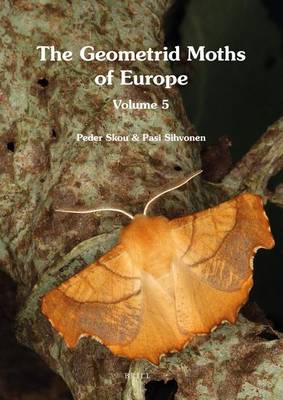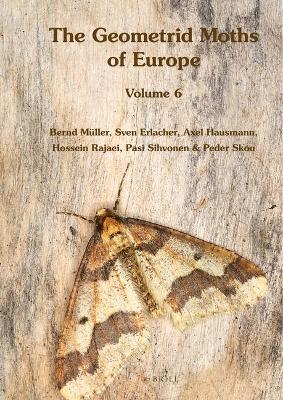Geometrid Moths of Europe
2 primary works
Book 5
Half of European Ennominae, a total of 141 species are covered in this volume, including difficult genera like Crocallis, Aspitates and Dyscia. Not less than 709 specimens are illustrated in 16 colour plates. For each species the following information is provided: taxonomic data, description, distribution, phenology, biology including host plants, habitat, similar species, male genitalia, including the everted vesica, female genitalia, and distribution map. Genetic data from DNA barcoding is provided for most species. 145 text-figures of diagnostic characters and other morphological structures. The taxonomic part includes new synonymies, status revisions, new combinations and numerous new distribution data. A systematic catalogue of the European species and the adjacent regions of North Africa, Macaronesia, Turkey and Middle East is included also.
Book 6
Ennominae II
by Bernd Muller, Sven Erlacher, Axel Hausmann, Hossein Rajaei, Pasi Sihvonen, and Peder Skou
Published 31 May 2019
To purchase all six volumes click here.
Final part of The Geometrid Moths of Europe concluding the revision of the European Ennominae moths, covering a total of 181 species plus 21 species of Geometridae found in Europe since publication of previous volumes. Several difficult genera such as Charissa, Psodos, Sciadia, Nychiodes, Selidosema, Peribatodes and the Tephronia complex are covered. Four new species are described, and the fauna is richly illustrated by 1116 specimens in 30 colour plates, 131 genitalia plates and numerous text-figures highlighting diagnostic features. For each species a taxonomic summary, description and diagnosis, distribution map, biology and genetic data are provided. Over 140 taxonomic changes are proposed. A systematic, annotated checklist with synonyms is provided, which summarises the entire Geometridae fauna of Europe (999 species) and adjacent regions.
Final part of The Geometrid Moths of Europe concluding the revision of the European Ennominae moths, covering a total of 181 species plus 21 species of Geometridae found in Europe since publication of previous volumes. Several difficult genera such as Charissa, Psodos, Sciadia, Nychiodes, Selidosema, Peribatodes and the Tephronia complex are covered. Four new species are described, and the fauna is richly illustrated by 1116 specimens in 30 colour plates, 131 genitalia plates and numerous text-figures highlighting diagnostic features. For each species a taxonomic summary, description and diagnosis, distribution map, biology and genetic data are provided. Over 140 taxonomic changes are proposed. A systematic, annotated checklist with synonyms is provided, which summarises the entire Geometridae fauna of Europe (999 species) and adjacent regions.

